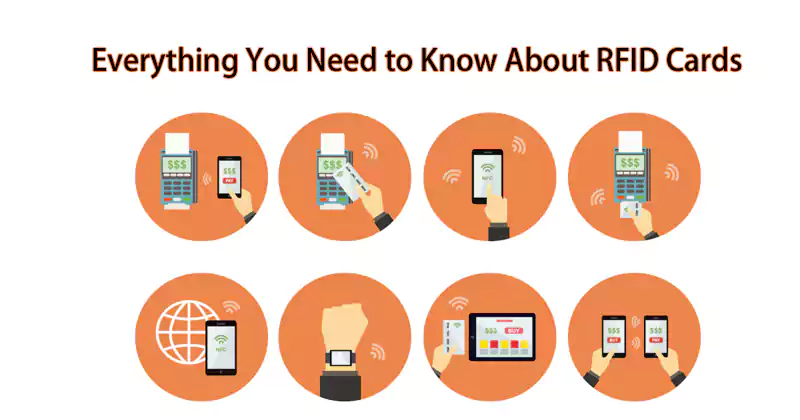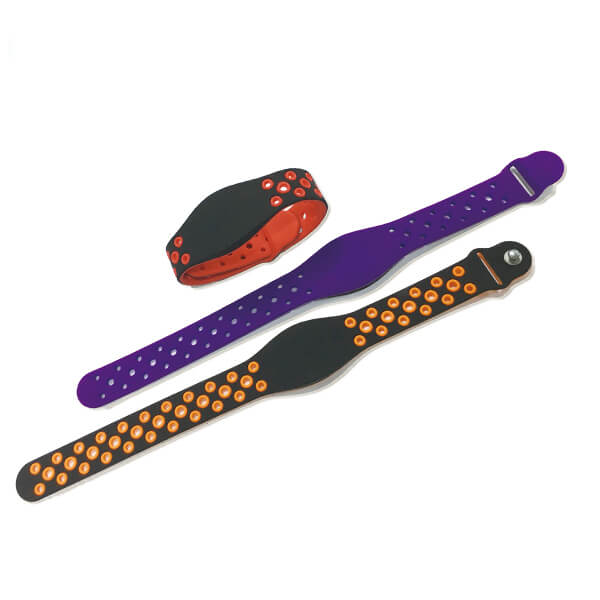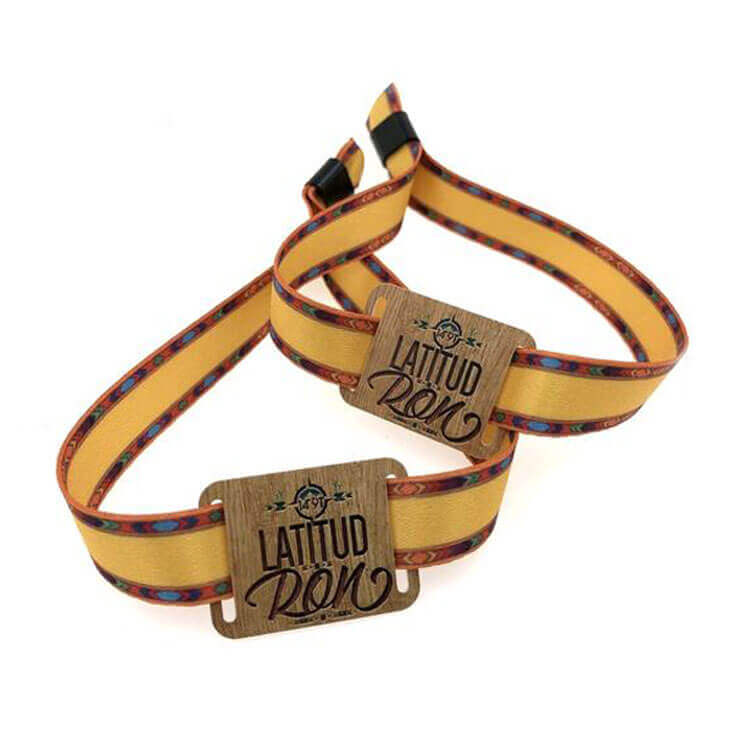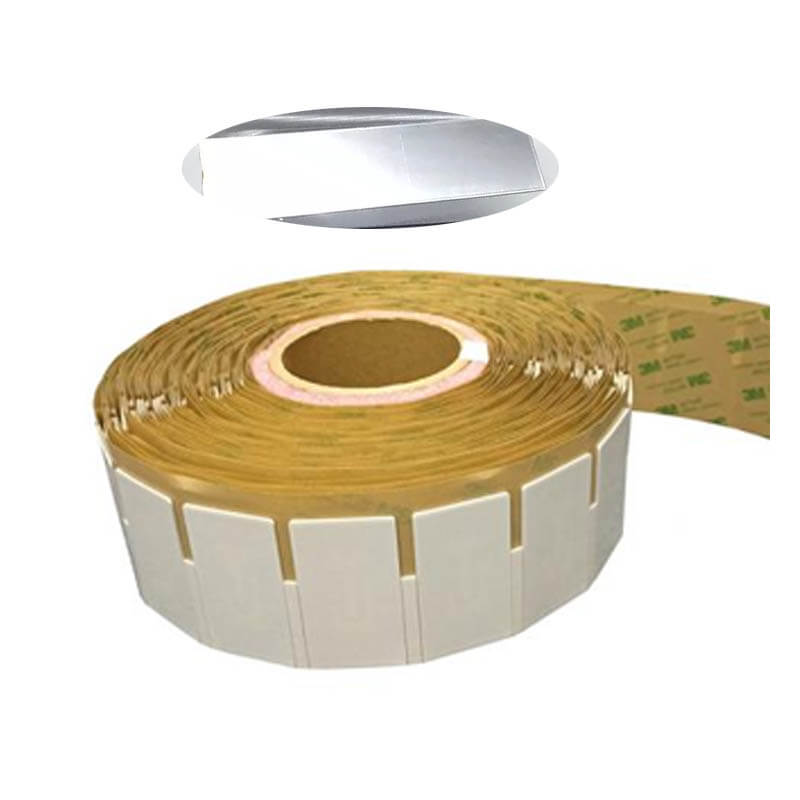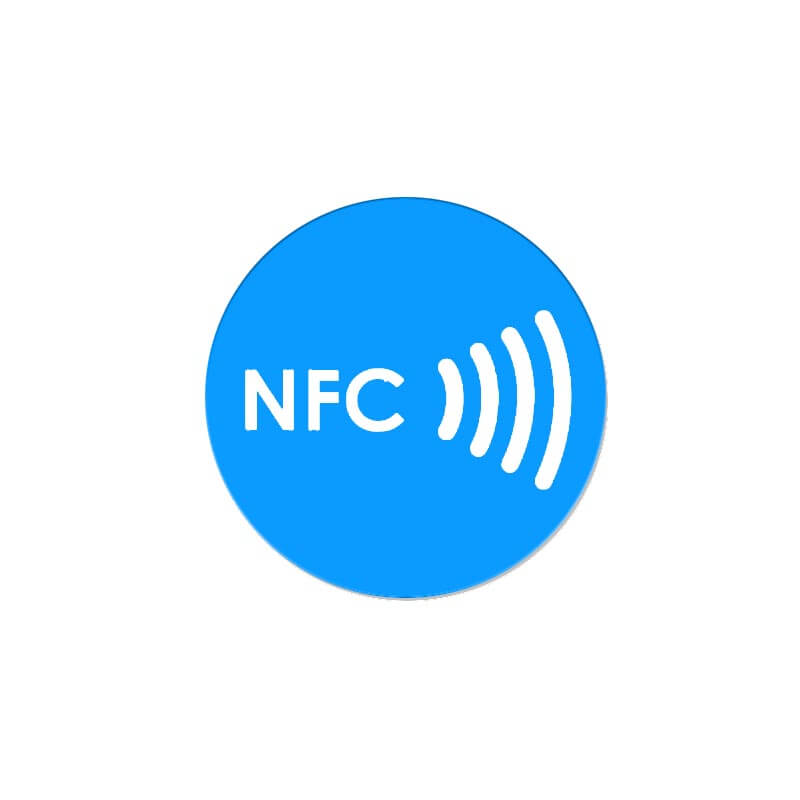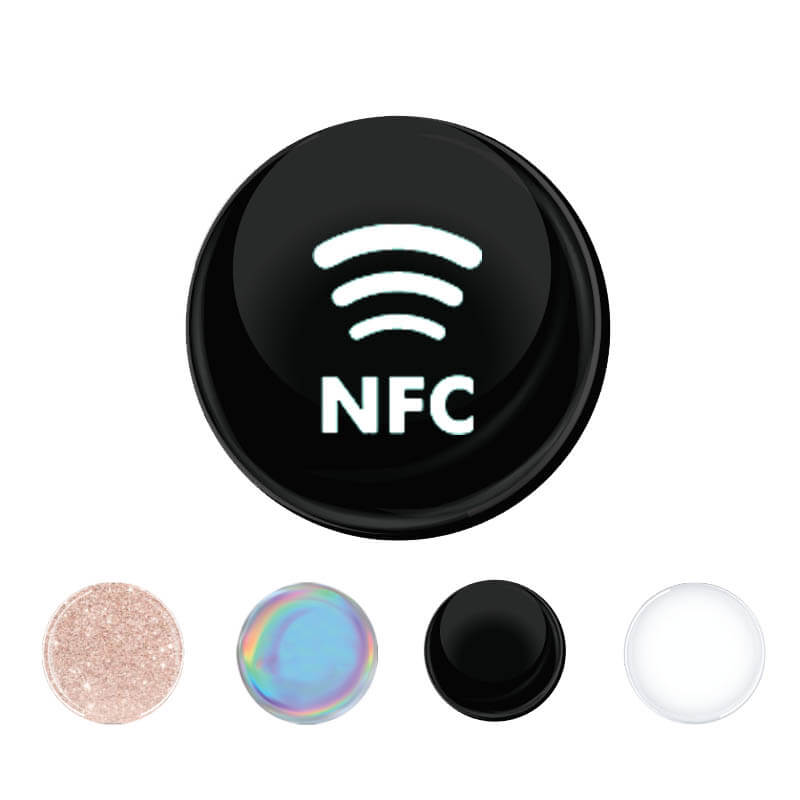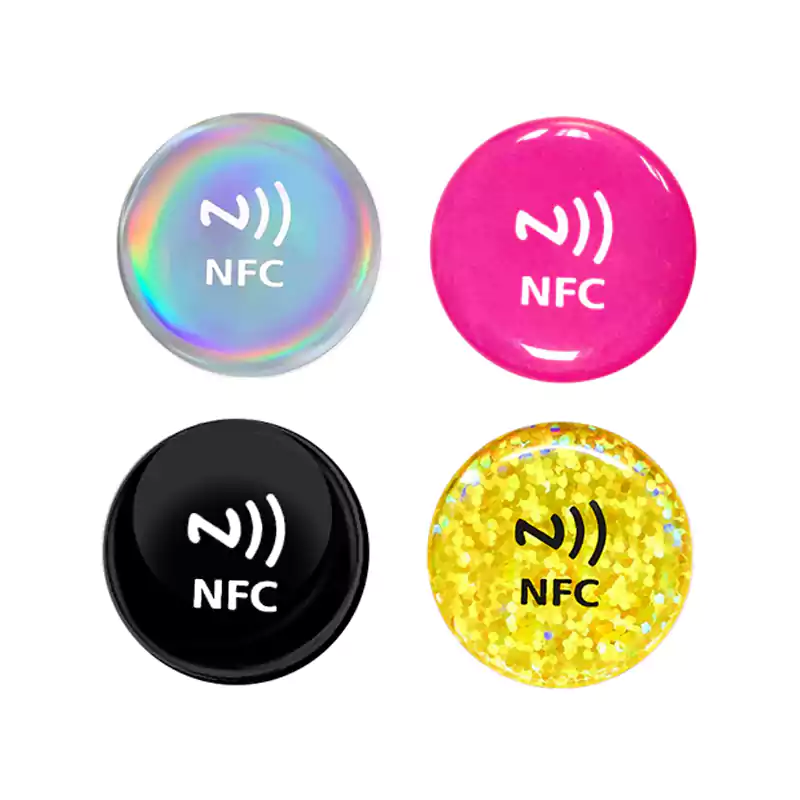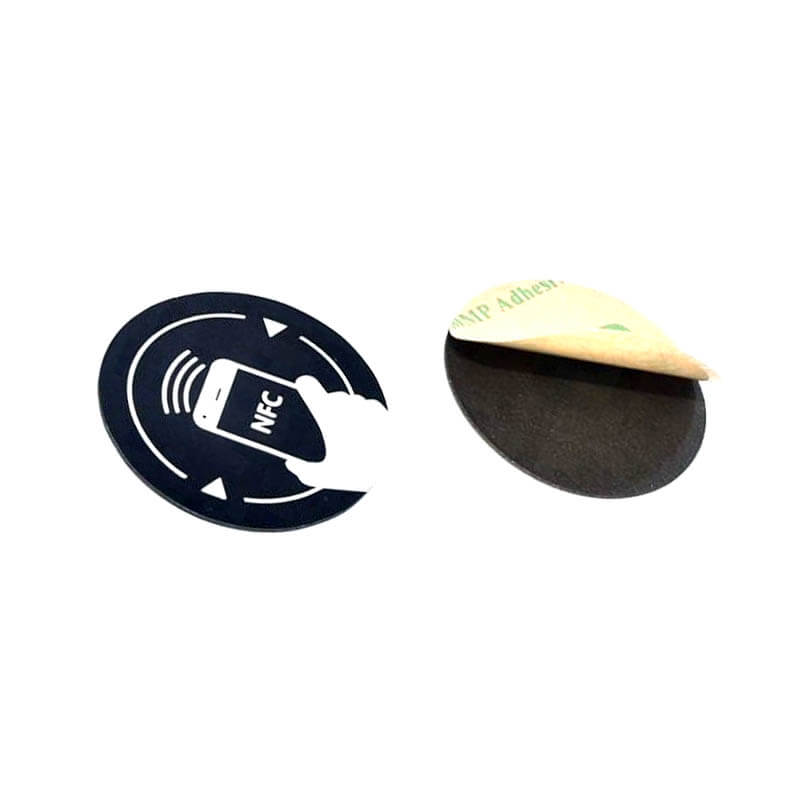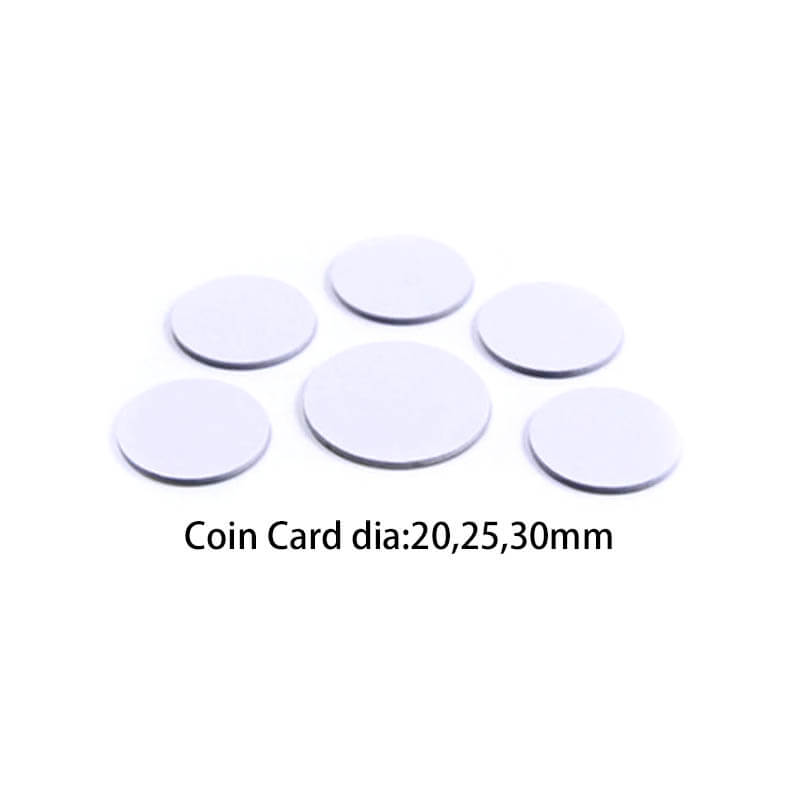Radio Frequency Identification (RFID) cards are used for tracking, identification, and access control. The cards integrate an RFID microchip that holds all the data needed for specific applications.
The RFID cards use different frequency bands, including 125 kHz Low Frequency (LF), 13.56 MHz High Frequency (HF), and 860-960 Ultra-High Frequency (UHF). The frequency band of each card will determine its applications. Here is a comprehensive RFID card guide.
What are RFID Cards?
These are contactless cards that contain an RFID chip that stores all the necessary data. The information is transmitted through radio waves and is picked by an RFID reader. The reader will then decode the data and transmit it to an integrated software for analysis and presentation. The entire process is fast and reliable – it will take just a few seconds!
Unlike the traditional magnetic or barcoded cards, you will not need to swipe the RFID cards to read the encoded data. Instead, the RFID cards only require proximity to the reader, which will pick the signals and complete the transaction fast.
Types of RFID Cards
RFID cards can be classified based on the type of operations and the frequency strength of the embedded RFID tag.
Classification of RFID Cards Based on Type of Operation
- Active RFID Cards
These cards have a battery-powered tag that continuously releases signals. Their ability to release and broadcast the signals is not dependent on the presence of an RFID reader.
The cards are primarily used in tracking high-value assets in high-speed environments, such as in toll stations. Additionally, they have a longer read range than passive tags and are relatively more expensive.
- Passive RFID Cards
Unlike active tags, the passive ones have no internal power source. They rely on electromagnetic energy released & transmitted by an RFID reader. As such, these tags are not functional until you introduce an RFID reader.
They are primarily used for functions such as access control, supply chain management, and smart labels. They are also relatively cheaper than active cards, thus widely used in industries and organizations.
- Semi-Passive RFID Cards
Semi-passive RFID cards have an integrated circuit, an antenna, and a battery. While these features are almost similar to RFID cards, there is a differentiator – semi-passive cards lack an onboard transmitter.
As such, they have a limited read range compared to the active ones. However, the inclusion of a battery makes it possible to add more features to the card, such as real-time trackers, sensors, and sound notifications.
Classification of RFID Cards Based on RFID Chip Frequency Wavelength
RFID cards may also be classified based on the type of RFID chip used in their construction. The three main types of RFID cards in this category include:
- Low-Frequency (LF) RFID Cards
These cards are embedded with LF RFID tags (30 kHz to 300 kHz). They have a slower read rate, and their read distance is relatively short.
However, the functionality of these cards is not affected by the presence of metals and liquids. As such, you can use them even in moist and metallic environments.
- High-Frequency RFID Cards
These cards operate within a frequency range of 3 MHz to 30 MHz. They have a better memory and longer read range than the low-frequency cards. As such, they are well suited for activities such as library management and transport management.
- Ultra-High Frequency (UHF) RFID Cards
These cards operate within a range of 300 MHz and 3 GHz. They are lower priced than both the LF and high-frequency cards.
They are largely used for asset tracking and inventory management.
Detailed Description of RFID Cards Components
When you look at your typical RFID card, you’ll not notice much difference from an ordinary plastic card. You’ll only notice its uniqueness when you use it to check out at the grocery store or open your office door.
So, what makes RFID cards unique? Why do these cards seem to have magical powers that enable them to communicate without a physical connection? Here are the components that make them tick!
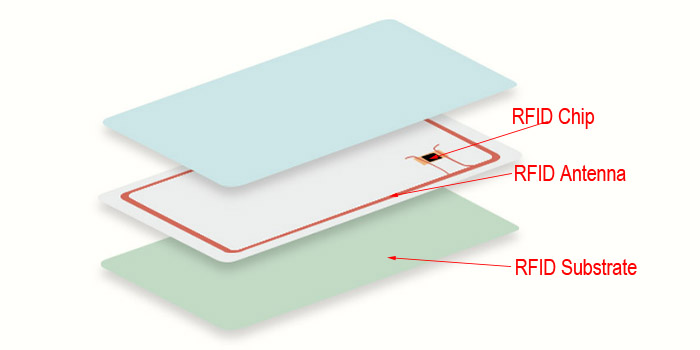
RFID Chip
This is what makes RFID cards different from the average plastic card. It is a tiny computer chip that is embedded in the card, containing information about your identity and account details.
The chip is usually very small – around the size of a grain of rice – but it’s highly sophisticated and can hold thousands of bytes of data. The chip itself does not contain any energy source, so it needs a power supply to operate.
Antenna
This is a tiny metal coil embedded in the card that receives and sends out radio waves. It is a critical component that enables the chip to communicate with a reader.
Once it receives a radio signal from the reader, it converts this information into electrical power. This allows the chip to operate and process data.
Substrate
This is the part of the card that you physically see and touch. It holds the chip and antenna together and provides structural support. Substrates are usually made from plastic, although some premium RFID cards use PVC,PET, ABS,wood, and other sturdy materials for added durability.
If your cards are subjected to harsh physical conditions, you must choose a hard substrate for guaranteed longevity. For example, Epoxy RFID cards are commonly used in industrial environments since they can withstand extreme temperatures, chemicals, and other environmental hazards.
RFID Cards Applications
RFID cards have been adopted in many sectors, including access control, supply chain management, and contactless payment. In this section, we detail the various RFID card uses that will make your life better.
The two main applications of RFID cards include: contactless payments& access control
1. RFID Cards for Contactless Payments
RFID cards are used in eateries, groceries, and other shopping outlets to make payments fast and conveniently. When using an RFID card to clear your bills, you’ll require just a few seconds to check out!
What is contactless payment?
Traditionally, credit card holders were required to swipe their cards through a magnetic reader to make their payments. This technique would take lots of time since it required direct contact between the scanner and the card, which is time-consuming.
With technological advancements, cardholders can pay their bills without all these hassles using contactless payment options. All that is required when using this technique is to tap or wave your RFID card over an RFID reader, and the payment will be processed immediately.
This tap-and-go RFID card payment option offers flexibility. You may opt to use other RFID options such as wristbands, watches, and smartphones. This diversity gives you a myriad of options to pay your bills using the contactless approach.
How RFID Card Contactless Payment Works
Like we’ve earlier indicated, your RFID card has an embedded RFID chip that holds your data. The microchip emits radio waves that are detected by an RFID reader.
To pay for your bills using the RFID card contactless technique, you will be required to hold this card near an RFID reader (no direct line required). The reader/ scanner will pick the radio signals, communicate with the card, and process all the payments. After a few seconds, the payment terminal will indicate whether the payment was successful or not.
Why RFID Card Contactless Payment is Not Working
If you’ve tried paying your bills using your RFID card in vain, there must be a genuine reason for the failure. Some of the reasons that may result in the failure of RFID card contactless payment include:
- Insufficient Funds in Your Account. If the money in your account is not enough to clear the bill, it will show an error. This is the most common and straightforward reason for RFID card failures.
- You’ve Reached Your Daily Spending Limits. Some regions or banks may have a daily spending limit. If you exceed the amount, then your payment request will be declined.
- Security Reasons. If the system notices suspicious activities on your account, it may block your card temporarily as a security measure. Additionally, some cards may require that your input your PIN or password after you’ve completed a given number of daily transactions.
- Your Card is Not Activated. New RFID credit/debit cards require activation before you can use them for contactless payments. First-time card users must set their pins to activate the card and unlock the payment option.
- Your Card Is Damaged. If your card is physically damaged, you may not be able to use it for contactless payment. The damage may be occasioned by water ingress, too much pressure, and excess sunlight, among many other natural and human-made causes. If that’s the case, you’ll be required to contact your provider to get a new RFID credit/debit card at a fee.
- The Card Reader Does Not Support Contactless Payments. If a merchant does not have a POS terminal that accommodates contactless payments, then you’ll not be able to make your payments using that option. Always ensure that you check contactless payment compatibility before you start shopping.
Contactless payment is, without a doubt, one of the most beneficial applications of RFID cards. It does not only offer convenience but also accelerates the checking-out process, thus making shopping fun. If you face any difficulties completing your contactless payment, evaluate your card for any possible reasons listed above.
2. RFID Cards for Access Control
In many organizations, the use of RFID access cards is an effective way of maintaining security. The cards are particularly helpful if you have restricted areas where only authorized individuals can access them.
RFID cards contain small computer chips that store up to 32 kilobytes of data. This space is enough to store a unique identification code for a specific individual. The data is encrypted, which prevents criminals from skimming it and using it for fraudulent activities.
Even better, the data can be overwritten or modified by an authorized security officer, making them highly flexible and cost-effective.
How RFID Access Cards Work
Like earlier indicated, RFID cards contain an RFID chip that contains data for specific individuals. This data can be transmitted to an RFID reader via radio waves.
When the cardholder comes close to a reader, the chip will be excited by the reader’s electromagnetic wave. It will then release radio signals that will be picked by the reader. As a result, the reader will capture and interpret the cardholder’s data.
There are two main types of RFID access cards in the market. They include:
- RFID Prox Cards. These are simple cards that offer one-way transmission of data from the card to the scanner/reader. All they need is proximity to the reader, and they will transmit the data.
- RFID Smart Cards. These offer a more secure and faster access control than prox cards. They have the unique ability to communicate with RFID card readers, which allows advanced encryption. Additionally, the cards come with in-built processors that help authenticate the card user using a single-use encrypted code. The code expires immediately after use, thus making it hard for criminals to clone the card.
Benefits of Using RFID Access Cards
- Automated Control. When using the RFID access cards, you’ll eliminate any chance of costly human errors. Unlike human security officers, these electronic cards never get fatigued, can never hand over access to the wrong individuals, and cannot succumb to engineered attacks.
- Ability to Gather Data. Access control cards allow you to gather and store data that may help you with decision-making. For example, you can easily analyze your employees’ punctuality, which helps you arrest irregular trends before they wreak havoc.
- Remote Management. When using access control cards, you can access all the data from a central source. This feature makes it possible for you to manage multiple departments without hassle.
- Affordability and Scalability. The cost of acquiring new cards is significantly low. As such, you can easily get cards for new employees. Additionally, you can integrate the RFID card system with other management portals to have a central management point.
Other Uses of RFID Cards
Besides access control and contactless payments, you can use RFID cards in other different ways. They include:
- Library Systems. You can use RFID cards to manage library inventory. Students will be required to carry their RFID library cards when going to the library. The card will then be used to store all the data about that particular student. For example, the borrowed books, expected return dates, among other crucial details.
- Events Management. Event organizers have turned to RFID technology to improve logistics in their events. All guests are provided with RFID cards that will allow them to access the event’s venue and make purchases inside the venue. Additionally, the use of RFID cards enables them to access their customer’s data for better planning.
- Healthcare Management. The use of RFID cards in hospitals helps reduce medication errors and provides the best care to patients. Each patient will have an RFID card that holds a unique identifier code. After scanning this card, the doctor will immediately know whether a particular medication is given, the meal times, and any other crucial details about the patient.
- Transport Management. Passengers can use RFID cards to pay for their transportation fees. The cards are directly linked to their bank account to ensure that the payment is processed in real-time. The cashless payment option is healthy and convenient for users.
Where to Buy RFID Cards
WXR provides customized RFID CARD services, The card will be modified to meet your casing, color, and size specifications. You can also have an image or a logo of your organization printed on the exterior of the card, giving it a personalized touch. Please contact us for more information


